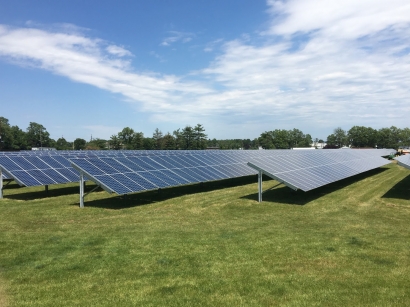
Today’s action follows the Commission’s Sept. 22, 2017, determination that crystalline silicon photovoltaic cells are being imported into the United States in such increased quantities as to be a substantial cause of serious injury to the domestic industry.
The suggested tariffs are lower than those requested by Suniva Inc., the Georgia-based manufacturer which filed the original complaint earlier this year.
Vice Chairman David Johanson and Commissioner Irving Williamson issued a joint statement calling for a 30 percent ad valorem tariff on imported solar cells, with the first 1 GW of imports exempt in 2018. This would increase by 200 MW per year.
They further called “For imports of CSPV products in module form, we recommend an additional 30 percent ad valorem tariff, to be phased down by five percentage points per year in each of the subsequent years.”
Chairman Rhonda Schmidtlein recommended ad valorem duties of 10 percent on the first 500 MW of imported solar cells, and a 30 percent rate for anything above that.
With regard to CSPV modules, she recommends an ad valorem tariff rate of 35 percent to be incrementally reduced during the 4 year remedy period.
Commissioner Meredith Broadbent stated, “I recommend that the President impose a quantitative restriction on imports of CSPV products into the United States, including cells and modules, for a four year period, administered on a global basis. I recommend that the quantitative restriction be set at 8.9 GW in the first year, and increase by 1.4 GW each subsequent year.
”I also recommend that the President implement other appropriate adjustment measures, including the provision of trade adjustment assistance by the United States Department of Labor and the United States Department of Commerce to workers and firms affected by import competition,” Broadbent said.
The commission will forward its report, which will contain its injury determination, remedy recommendations, certain additional findings, and the basis for them, to the president by Nov. 13, 2017.
President Trump will make the final decision whether to provide relief to the U.S. industry and the type and amount of relief.

